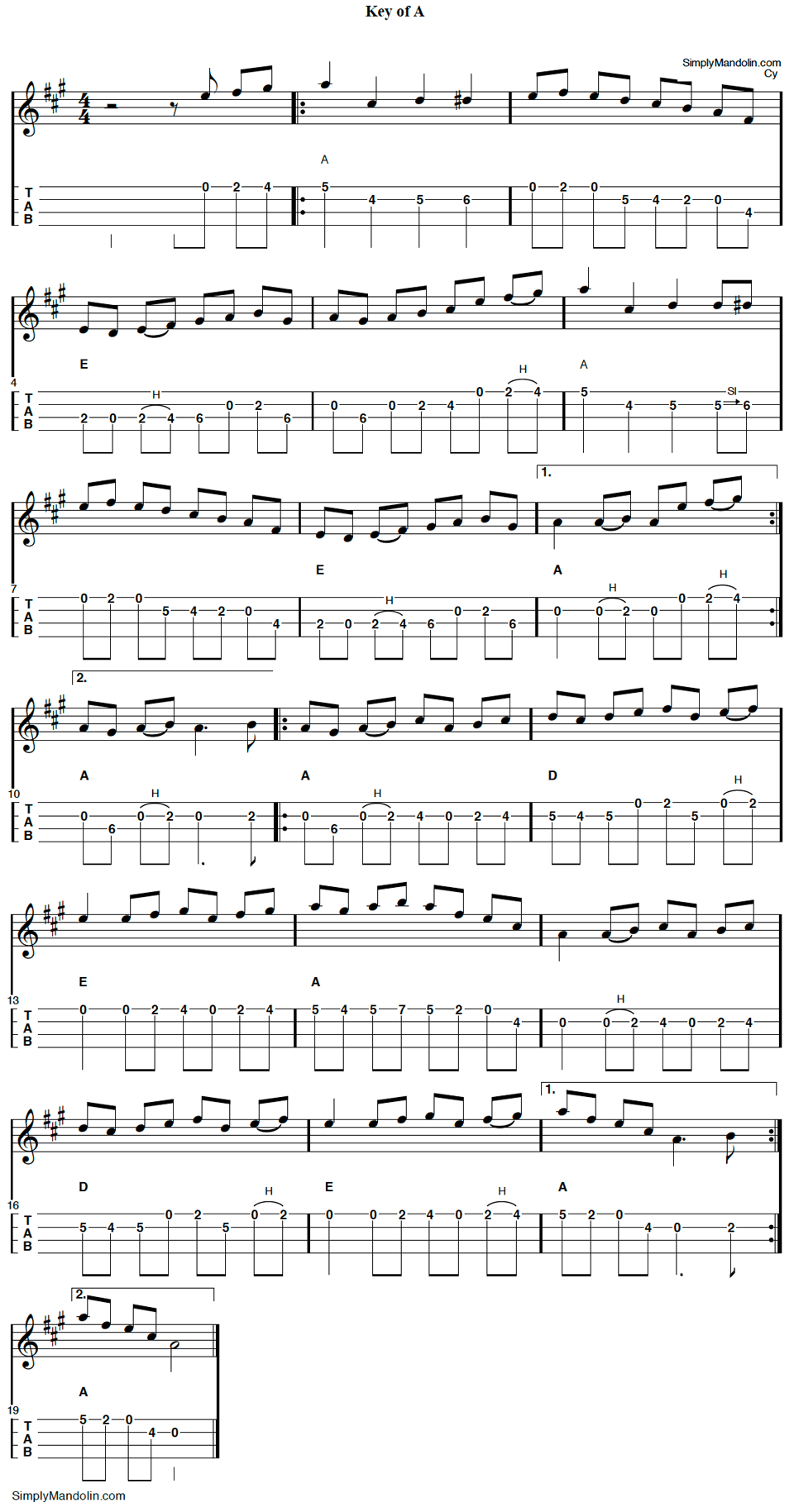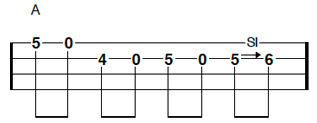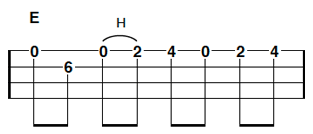Big Sandy River is another classic fiddle tune made famous by Bill Munroe.
It gets its name from a river in the United States. Two tributaries in Kentucky and West Virginia (the Levisa Fork and the Tug Fork) join together to form the Big Sandy River. It flows northerly, for a little less than 30 miles, along the borders of Kentucky and West Virginia, where it empties into the Ohio River.
An area along the Tug Fork tributary, that flows into Big Sandy, is well known as the site of the famous Hatfield-McCoy feud.
Big Sandy River is in the key of A. The following version should be fairly straight-forward. It’s in 4/4 time with a typical down-up-down-up picking pattern (down on the beats). The most difficult part, for some, may be fretting the notes on the 6th fret. A common question is “should I use my ring finger or my pinky on the 6th fret?”.
Try using your ring finger for both the D, at the 5th fret on the second string, and the D-sharps at the 6th fret. Use the same finger for the G# at the 6th fret of the D (or third) string.
Listen to Big Sandy River for mandolin:
Big Sandy River

Download:
Tablature and Music
Just the Notation
Just the Tab
Variations
A-part
You’ve already seen a simple variation in the A-part. Instead of playing the 6th bar exactly the same as the 2nd, I’ve put in a slide from the 5th to the 6th fret (D to D#).
But, you could try adding some notes in these bars. I always find myself adding a few notes. It’s funny because I often take notes out of a piece to add pause, or a little change to the flow. Then, when I’m playing, I tend to add them back in as I keep the down-up-down-up pattern going. Okay, not so funny.
By adding a couple open notes to the 2nd or 6th bar, you could get something like this:

I don’t actually strike the added open notes as hard as the the others, so they’re not nearly as loud. In fact I just touch them.
B-part
You can see that the 11th bar and the 15th bar are the same except for the added G-sharp in the 11th. Just switch those two bars around and you may notice a different feel to the start of the B-part.
Also, try adding a D# (2nd string, 6th fret) to the 13th or 17th bar like this:

Another great variation to try is moving the whole B-part down an octave. You’ll use mostly the same notes, but start on the 4th (lowest) string. Give it a go!

